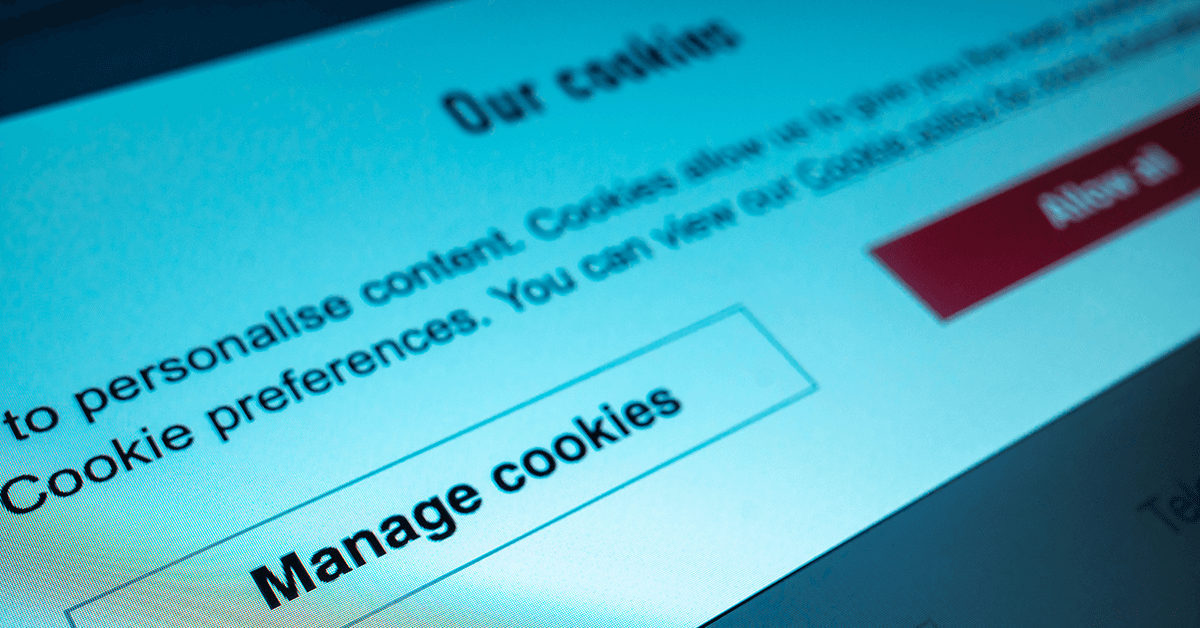
The marketing industry has been dealing with curveballs since its inception.
From the invention of the internet to the dawn of social media, marketers over the years have learned to not only adapt but thrive in this constantly evolving industry. For B2B marketers, change really icold calls the only constant.
But when Google broke the news that third-party cookies were being erased from Chrome browsers, marketers panicked. Because nothing hurts quite like Google. customer experience
Almost 70% of all internet users choose Google Chrome as their browser of choice. So, you can understand why marketers feel nervous—that’s a rather large audience that is no longer trackable once Google block third-party cookies from their tech stack. Even Google estimates publishers could lose 50% to 70% of their ad revenue unless they find alternative ways to gather audience data.
Thankfully, marketers will still be able to target their audience with relevant, personalized content, even without the help of cookies. In fact, alternative methods may produce better results. Because despite marketers’ reliance on them, third-party cookies are flawed. Their attribution accuracy hovers between 40% and 60%, meaning they’re only reliable around half of the time. Alternative methods derived from your own data sources may be lower volume but are likely to have much higher accuracy.
And don’t forget, online advertising is a huge part of Google’s revenue stream, equating to 80% of parent company Alphabet’s 2021 earnings. Therefore, Google are unlikely to leave marketers without a third-party cookie alternative and are actively working on developing tools to enable targeted advertising without breaching privacy.
But before we dive any further into the reasons why marketers don’t need to fear the phase-out and the viable alternatives to third-party cookies, it’s important to understand the story behind the cookie’s demise.
A Brief History of Cookies
During the internet’s primitive years, websites lacked the ability to recognize and track individual users per visit. Think of those mind eraser gadgets from the movie Men in Black—every time a visitor would leave a site and return sometime later, the site itself would essentially “reset,” making that return visitor just another internet stranger. Shopping carts would empty as soon as shoppers left, and login credentials would be forgotten instantly.
Recognizing the frustration in this, Netscape engineer Lou Montulli sought to improve things by enabling websites to remember certain user actions, such as cart contents. In 1994 he finally succeeded, creating what we know today as the “cookie,” a small text file stored on a user’s browser, allowing websites to recognize them upon their return, much like a digital nametag.
A year later in 1995, DoubleClick (an early AdTech firm purchased by Google in 2007) discovered Montulli’s original cookies could be adapted to track users across the web for advertising purposes. And thus, the third-party cookie was born.
Here’s a quick overview of the differences between first and third-party cookies:
First-Party Cookies
- Created by the website you’re visiting
- Remembers useful elements of your visit to improve the experience
- Has no ability to track you elsewhere outside of that specific site
Third-Party Cookies
- Created by a different website than the one you’re visiting
- Can track your actions across various websites
- Used to target you with personalized ads
Third-party cookies essentially revolutionized online advertising, giving advertisers the power to track users across the web and target them with ads based on their specific online behavior. And while this has proven to be a wonderful resource for advertisers, consumers haven’t been so enthusiastic.
Users’ discomfort with being surveilled online has increased over the years, as legislation such as GDPR and CCPA has brought online privacy concerns to the forefront. Hence, the third-party cookie phase-out, although inevitable, has become a hot-button topic among internet users and advertisers alike.

Why Are Third-Party Cookies Being Phased Out?
Third-party cookies have been losing traction for a while. Mozilla blocked them from Firefox in 2018. Apple cut them from Safari in 2021. Now, Google has joined suit.
In early 2020, Google announced third-party cookies would eventually be discontinued as part of an initiative to improve online privacy. Although originally slated for early 2022, the third-party cookie cut-off has since been rescheduled for the second half of 2024.
This delay is a sliver of good news for marketers, as they now have time to prepare accordingly. But with 67% of them feeling a mixed range of emotions, from disappointment and frustration to helplessness and confusion, the grace period may not be enough to ease concerns. That’s because many marketers rely on third-party cookies for tactical mainstays such as targeted advertising, customer profiling, and conversion attribution.
Third-Party Cookies Alternatives
Despite what industry chatter may tell you, the decline of the third-party cookie does not mean marketing as we know it is dead. If you’re one of the 44% of marketers that are concerned about being able to track the right data in the cookie-less world, fear not. There are a handful of valuable alternatives that can provide actionable insights into customer behavior without ever abusing user privacy. Take these, for example:
Zero-Party Data
In line with its namesake, this type of data poses zero privacy concerns, as the user willingly volunteers the information. Forrester provide a useful definition of zero-party data:
“Zero-party data is that which a customer intentionally and proactively shares with a brand. It can include preference center data, purchase intentions, personal context, and how the individual wants the brand to recognize [them].”
B2B teams can obtain zero-party data through their company’s respective digital channels, normally in exchange for an enticing offer. An example of this is a website form that asks a user for their business department to curate a tailored experience. Consider a project management software company that wants to demonstrate bespoke use cases of their software to different professions—a HR professional would likely have different needs versus a marketing professional. Therefore, in exchange for their information, a user receives an experience personalized to their requirements, and the project management software company obtains zero-party data. Win-win!
Another way to collect zero-party data is from lead capture forms. These forms require contact details to be exchanged for an asset of some description, such as a webinar, whitepaper, or eBook.
First-Party Data
This is the term for information gathered about a customer’s behavior across your own digital platforms. This comes from data you’re likely already collecting from your own websites and/or apps, making it easy to obtain. First-party data includes metrics like clicks, time on page, email opens, and social engagements.
Second-Party Data
Essentially, second-party data is first-party data that’s purchased from another company. Digital publishers and review sites like TrustRadius and G2 are excellent sources of second-party data. Additionally, publishers who own multiple sites across the web can collect first-party data to then sell to other companies. There’s debate around the validity of second-party data, as after all, it is simply someone else’s first-party data. However, the results speak for themselves. Marketers have reported seeing a 30% boost in ad performance after integrating second-party data into their strategy.
Contextual Marketing
While it can feel a little old school, contextual marketing is still a powerful play. Contextual marketing determines a prospect’s interests based on the kind of content they consume. For example, if they read a blog comparing enterprise IT solutions, you can probably guess that person is in the market for these kinds of products. Thus, if you’re an enterprise IT solution provider, this content is probably a suitable venue for displaying digital ads.
Google’s Privacy Sandbox
Third-party cookies may be going away, but Google has been hard at work coming up with viable alternatives. Google’s Privacy Sandbox is an initiative that gives companies the ability to conduct targeted advertising—much like they do now—while still protecting users’ online privacy. At present, Google is testing three new technologies, Topics, FLEDGE, and the Attribution Reporting API:
Topics
A way to target users with relevant ads, based on the ‘topics’ that resonate best with their interests. Browsers will oversee the identification of these topics, recognizing a user’s top interests in any one week, and deleting stored topics after three weeks. When a user visits a participating site, a topic from those previous three weeks will be shared with the site and its advertising partners for targeting purposes. Users will be able to view their topics, remove any they disagree with, and disable the feature completely.
FLEDGE
An option for running highly-targeted remarketing ads without the need for the cross-site tracking that’s currently enabled by third-party cookies. Browsers will hold data on user interests, as opposed to the advertiser or AdTech platform. This ensures personal data and browsing behavior remains private.
Attribution Reporting API
Makes it possible to measure when an action from a user leads to a conversion, without the use of third-party cookies. The API will be able to measure click-through and view-through attribution.
Universal ID
This concept entered development as soon as the shift to cookie-free web browsing began. Much like Google’s Privacy Sandbox, Universal ID is being designed to replace the functionality of third-party cookies. It allows for the identification of individuals without the need for cookies while also respecting users’ privacy.
Sure, using these various methods to decode your customers’ behavior may feel unfamiliar or even uncomfortable at first—the convenience of third-party cookies is just a tremendously strong selling point. But by developing a strategy that leverages these various data types, it is possible to gain key insights into your customers, even without the help of cookies.

How B2B Marketing Can Improve Without Third-Party Cookies
Your customers will be much better off without the surveillance of third-party cookies tracking their every move. In fact, customers have been uncomfortable with the stalker-esque nature of third-party cookies for some time.
The UK’s Information Commissioner’s Office, an independent body created to uphold public information rights, commissioned a survey into people’s tolerance of online advertising in 2019. Survey findings revealed 63% of respondents thought it okay for websites to display adverts in exchange for free content. But when these same respondents realized personal data was being used to target ads, that figure dwindled to 36%.
Despite being invented to help digital consumers, cookies have since evolved into a tool primarily useful for advertisers. However, the balance of power is slowly shifting in favor of the customer, who can now take back long-awaited control of their online privacy.
So, how can this be good for marketing?
Improved Customer Experience is Mutually Beneficial
Moving away from third-party cookies encourages businesses to prioritize customer experience, which isn’t just good for customers, but for business too. Companies that focus on customer experience reduce customer attrition by up to 15% and close 20-40% more final stage prospects. Zero- and first-party data rely on customers voluntarily handing over information or interacting with your owned media, so the more they engage, the more data points you receive. If you don’t provide an enticing offer, or your website experience is well below-par, prospects won’t stick around, and opportunities to gather data will be hard to come by.
Cookies Aren’t Perfect
Third-party cookies aren’t foolproof. They’re convenient, sure. But as previously discussed, match rates are only reliable around 50% of the time. Plus, they’ve already been restricted in multiple ways, and their reliability dilutes with each additional setback. GDPR, browser blocking, iOS tracking restrictions, and incognito browsers are just some of the challenges third-party cookies currently face. Savvy marketers should already be seeking alternatives.
More Engaged Data
Losing volumes of data is a valid concern, but even this can be beneficial, especially considering third-party cookies’ sub-par match rate. Yes, your data pool will shrink, but your data quality should improve. For example, B2B teams can collect zero-party data based on information prospects voluntarily provide across their own digital channels. It’s akin to your prospect holding their hands up and declaring that, yes, they’re interested in you, and they’d be happy to hear from you. Prospects identified from both zero- and first-party data will have engaged with your brand in some way, therefore they’re likely more willing to receive follow-up communication from you than a prospect who is just browsing solutions or companies merely similar to yours. So, when you do eventually reach out to them, your success rate will likely be higher than if you just made a cold call.
Having a mix of data sources has always been the best approach, and third-party cookies’ departure makes that non-negotiable. If you’re looking to gather an insightful, workable volume of customer data to craft targeted, personalized campaigns, using a blend of the data sources mentioned above will enable you thrive in the cookie-less world.
Summary
Third-party cookies may be going away, but B2B marketing doesn’t have to suffer. By combining multiple data sources in the absence of third-party cookies, marketers will still be able to gauge a strong idea of their prospects’ behavior and preferences. Therefore, marketers can continue to use this data to develop personalized campaigns that convert these interested parties into paying customers.
As highlighted by Sophie Wooller, Director of Digital Transformation at Croud, marketers trying to circumvent the loss of third-party cookies are “missing the point.” This is happening because consumers have asked for it, and legislation demands it. It’s now up to marketers to adapt and find new ways to serve customers relevant experiences while simultaneously safeguarding privacy.











